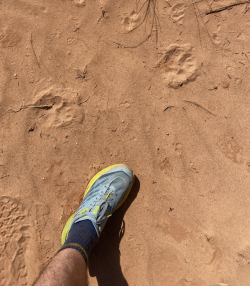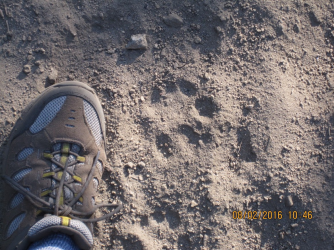Devin
Member
- Joined
- Jun 27, 2013
- Messages
- 5
Howdy folks,
I was wondering if anyone out there could tell me whether or not these are from a mountain lion?
Took the pic in Ernie's Country in the Maze last September (2024), in a side canyon with no sign of any recent human activity.
Saw them cross the wash in a few other places, but this was the clearest set.
(I've never felt confident about ID'ing prints, but in my mind, due to their size, they were definitely mountain lion, and they put a spring in my step. haha).
I hope you all are having a good one.

I was wondering if anyone out there could tell me whether or not these are from a mountain lion?
Took the pic in Ernie's Country in the Maze last September (2024), in a side canyon with no sign of any recent human activity.
Saw them cross the wash in a few other places, but this was the clearest set.
(I've never felt confident about ID'ing prints, but in my mind, due to their size, they were definitely mountain lion, and they put a spring in my step. haha).
I hope you all are having a good one.






